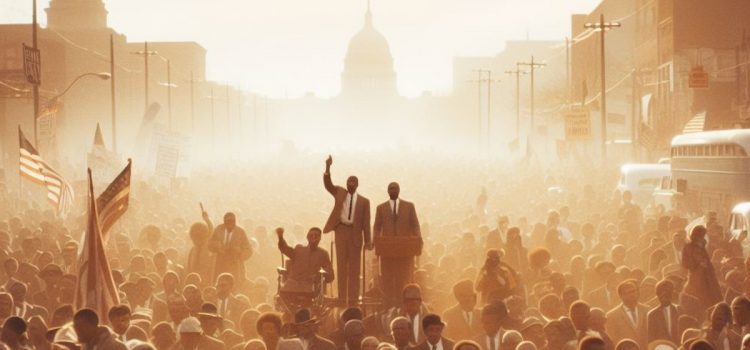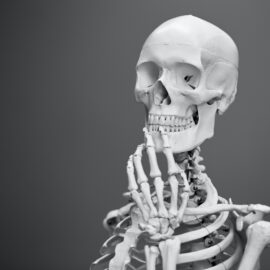
How did the Civil Rights Movement differ from the Black Power Movement? How did violent white supremacist suppression impact the progress and goals of both movements?
In A People’s History of the United States, historian Howard Zinn explores the Black Power and Civil Rights movements. He highlights their distinct approaches to achieving racial equality amid systemic oppression and violent white supremacist backlash.
Keep reading to learn about the Black Power and Civil Rights movements in America.
The Black Power and Civil Rights Movements (1954-1980s)
Zinn traces the history of the Black Power and Civil Rights movements from “the people’s” perspective. Despite Black participation in WWII and the booming post-war economy, Black Americans remained a legally segregated and oppressed underclass, Zinn explains. As a result, Black Americans organized on a larger scale than ever before to struggle for equality. Their struggle began with the Civil Rights Movement, a campaign for legal equality through peaceful, yet disruptive protests. From 1954 to 1968, the Civil Rights Movement pressured elites into outlawing racial segregation and passing a series of moderate reforms to protect Black rights.
However, Zinn argues, legal equality failed to significantly improve the lives of Black Americans, as racial discrimination, racist violence, and poverty were still commonplace. As a result, some Black Americans embraced the more radical and militant beliefs and methods of the Black Power Movement. Through leaders like Malcolm X and Huey Newton and groups like the Black Panther Party, the Black Power Movement advocated the use of violence in self-defense, class struggle, and achieving Black economic and political independence.
Violent white supremacist suppression prevented the Civil Rights and Black Power Movements from achieving genuine racial equality, Zinn argues. Police and white supremacist vigilantes like the Ku Klux Klan murdered and terrorized protesters and activists. Black leaders like Martin Luther King Jr. and Malcolm X were assassinated under mysterious circumstances, while others like Fred Hampton were explicitly assassinated by the FBI. Discriminatory anti-crime measures and the proliferation of drugs destroyed Black communities and their ability to organize, while increased media and political representation of Black Americans gave the false appearance of equality.
(Shortform note: Since the publication of A People’s History of the United States, Black Lives Matter (BLM) has emerged as the largest contemporary movement for Black equality. Unlike the Civil Rights and Black Power Movements, BLM is intentionally decentralized—consisting of nonhierarchical local chapters and organizations. According to BLM organizers, this decentralized structure makes it harder for their political opponents to shut down the movement by slandering or otherwise targeting one individual, as was the case for earlier Black equality movements.)
| Ideological Origins of the Black Power and Civil Rights Movements While the Civil Rights and Black Power Movements worked toward broadly similar goals, they each consisted of a number of different groups with varied ideologies. Let’s examine the main ideological strains behind each of these movements. Black Power Movement: The Black Power Movement’s main ideological origin was in Black nationalism, or the belief that Black Americans should have their own distinct cultural, economic, and political institutions. Black nationalism began as an offshoot of abolitionism and was adopted in some Black reconstruction-era communities. Over the course of the 20th century, different Black nationalist groups brought in other ideologies that influenced the Black Power Movement. For example, the Nation of Islam rejected Christianity as a white religion in favor of their own version of Islam. The Black Panther Party adapted Marxist-Leninism, viewing its revolutionary methods and ideals as the best way to achieve Black independence. Civil Rights Movement: The ideology of the Civil Rights Movement was heavily influenced by liberal and progressive organizations that had fought for integration and Black political rights in years past—groups like the National Association for the Advancement of Colored People, or NAACP, which was founded in 1909. In addition, Civil Rights leaders like James Farmer and Martin Luther King Jr. were inspired by Mahatma Gandhi’s policy of satyagraha, or nonviolent protest and civil disobedience, during the Indian independence movement. |






